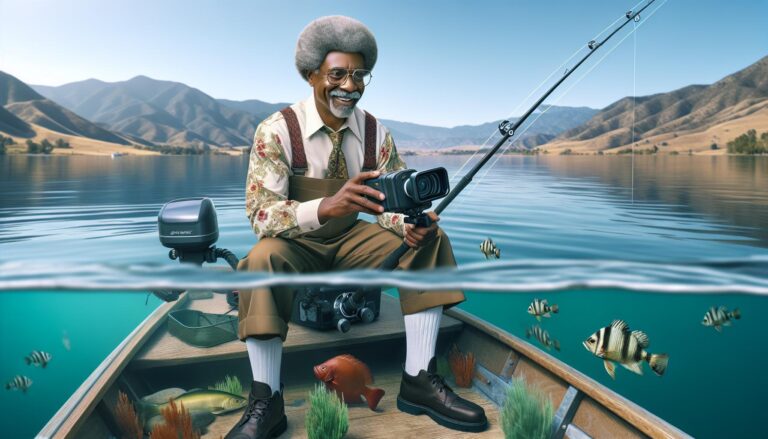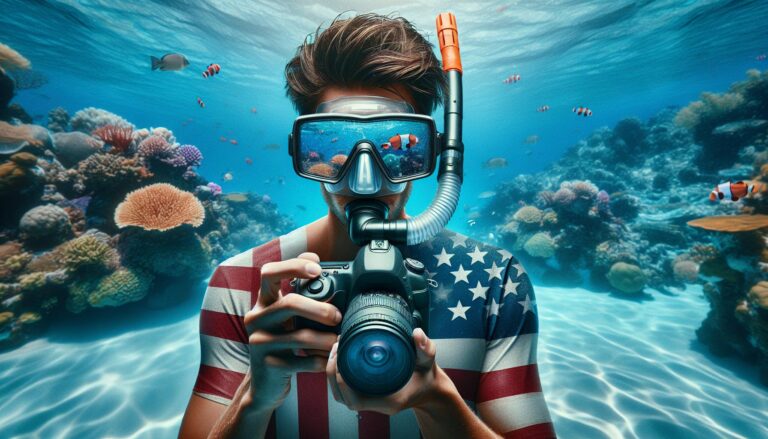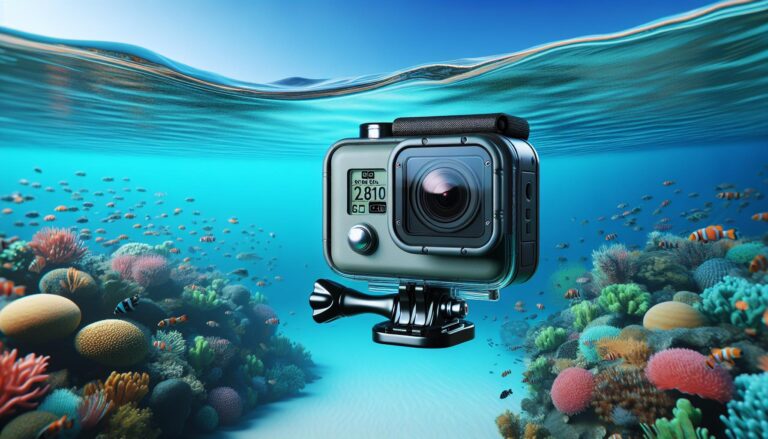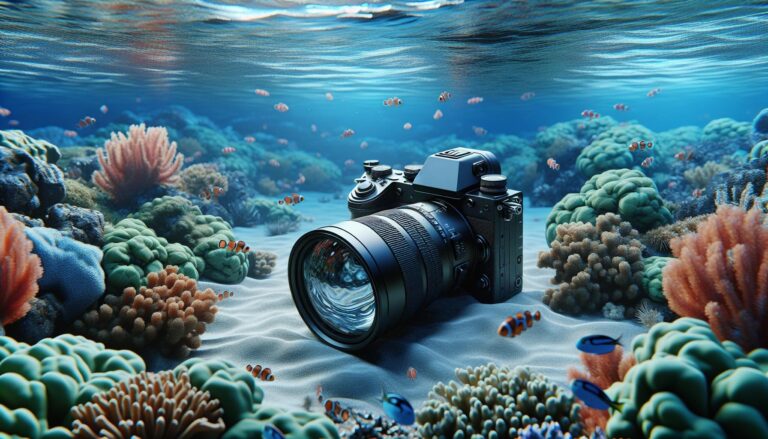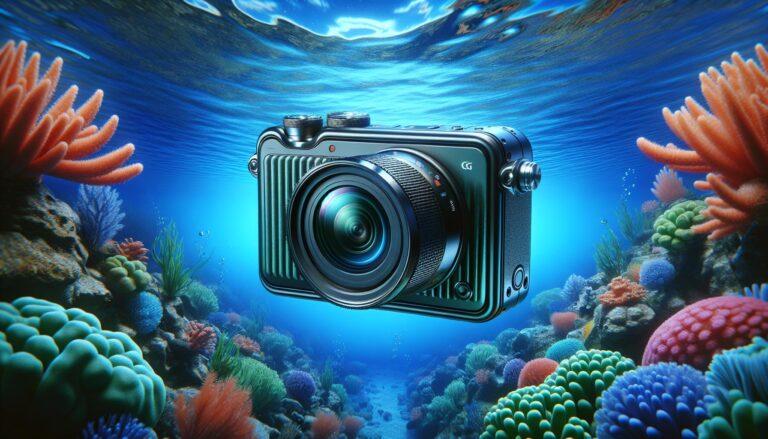Mastering Underwater Photography: A Complete Guide to Digital Underwater Cameras
Diving into the deep blue, you’re surrounded by a vibrant world begging to be captured. But how can you immortalize these breathtaking underwater sights? I’ve got the answer: a digital underwater camera.
This isn’t your average point-and-shoot. These cameras are built to withstand pressure, resist water damage, and deliver high-quality images in challenging conditions. Whether you’re a seasoned diver or a poolside enthusiast, there’s a model out there perfect for your aquatic adventures.
Importance of a Digital Underwater Camera
A digital underwater camera, far from being only a photographer’s tool, is an essential piece of equipment for anyone venturing into the aquatic realm – divers on a coral reef expedition, for instance. Such a camera, with its ability to resist pressure, offers me the ability to capture high-quality images even in challenging underwater environments. In fact, it shines particularly bright in such scenarios.
First, they allow professional-level photography in extreme environmental conditions, unattainable by regular cameras which would fail under water pressure and damage. Users obtain high-quality images of vibrant marine life and imposing ancient structures resting on the ocean floor, all without fear of damaging their equipment. A diver, passionate about the mysteries of the deep sea, thrives with one of these in hand.
Next, they come equipped with specialized features tailored to underwater use. Aspects such as adjustable ISO, wide-angle lenses, and task-specific modes optimize my photography experience under water. These unique characteristics enhance the quality of the images, capturing breathtaking underwater views – think of photographing a school of fluorescent fish or a sunken ship.
Yet another benefit, these cameras offer a sense of versatility and adaptability. They’re designed to withstand extreme conditions on one hand – and capture everyday moments on the other. Hence, they can double as regular cameras when I’m not diving, providing crisp pictures of a family barbecue or a radiant sunset.
Lastly, they foster a sense of exploration and preservation. With an underwater camera, I get an opportunity to share the silent world beneath the ocean’s surface, advocating for its preservation in a world where its beauty often goes unnoticed.
Given these reasons, it’s clear that a digital underwater camera is more than a mere accessory. It is, in fact, necessary equipment. Whether I’m capturing the wonders of unexplored seascapes or the simplicity of quiet moments above water, the importance of a digital underwater camera cannot be overstated.
Key Features of a Digital Underwater Camera
Delving further into what makes a digital underwater camera essential, let’s explore some key features. Each detail enhances the camera’s ability to capture breathtaking underwater images.
Depth Rating
Often regarded as the foremost aspect, a digital underwater camera’s depth rating indicates its maximum operational pressure limit, measured in feet or meters. For instance, an advanced model might hold a depth rating of up to 200 feet (approximately 60 meters), allowing for deep dives into oceanic mysteries. Equipped for pressure changes, these ensure device safety and exceptional imaging down in the abyss.
Megapixel Count
I move to another significant feature – the camera’s megapixel count. It determines the resolution and detail captured in the photograph. A higher megapixel count, say 16MP or 20MP, guarantees sharp, detailed images, capturing every scale on a fish or subtle nuances in a coral reef. It’s essential in highlighting the vibrancy of undersea life, ensuring each shot holds the intricate marvels you’d want to share.
Wide-Angle Lens
Finally, let’s discuss each digital underwater camera’s wide-angle lens. Providing a larger field of view, it captures expansive underwater landscapes. For example, a wide-angle lens of 24mm allows wider shots, encompassing vast coral colonies or shoals of swimming fish. This feature significantly enhances the visual narrative of the scene, painting a complete picture of the underwater world’s breathtaking expanse.
Popular Digital Underwater Camera Brands
Dipping into the realm of renowned digital underwater camera brands enriches the knowledge about these essential tools. Brands like GoPro, Olympus, and Nikon stand at the forefront of this sector, attributed to their products’ superior quality and distinct features.
GoPro
Arguably the most recognized brand in the action camera industry, GoPro’s models excel in underwater settings. For instance, GoPro HERO9 Black offers spectacular quality, boasting 20MP photos, 5.3K videos, a front display for easy framing, and 33ft (10m) water resistance without additional housing. Coupling durability with innovative technology, it’s no surprise GoPro remains a popular choice for underwater photography.
Olympus
Specializing in weather-sealed and rugged cameras, Olympus holds its ground as a veteran in digital photography. The Olympus TG-6, in particular, withstands depths of 15m, shocks from 2.1m and crushing weights up to 100kg. It features a high-speed F2.0 lens, 12MP sensor, and 4x optical zoom. It also handles microscopically close-up shots, crediting its fantastic macro capabilities.
Nikon
Nikon, a storied name in the world of photography, isn’t shy about making waves in the sea of digital underwater cameras. The Nikon Coolpix W300 is a durable and versatile option. It’s waterproof down to 30m, boasts a 16MP sensor, 4K Ultra HD videos, and a 5x optical zoom.Nikon’s reputation for lens and image quality endures underwater, making it a reliable choice for underwater explorations.
Tips for Capturing Stunning Photos Underwater
Before we delve into the art of underwater photography, it’s essential to master certain techniques and focus on important elements such as lighting, shooting from close distances, and making full use of underwater modes.
Appropriate Lighting
The first key to capturing exceptional underwater photos is managing lighting properly—light behaves differently underwater, and it’s crucial to understand its play. Concerning light sources, naturally, sunlight serves as your primary light source during daytime dives. However, you aren’t limited to sunlight. Adding external strobes or video lights lends depth and vibrancy, reducing unwanted shadows. Aim to adjust your camera’s white balance settings, reducing the blue hue that’s common in underwater photos. Remember, always aim direct beams at an outward angle to prevent hot spots in your captured images.
Close-Up Shots
Another critical aspect for winning shots underwater includes shooting close to the subject. This practice reduces the amount of water between your subject and lens, enhancing image clarity and detail. Minimal distance allows for better light penetration—vital in underwater settings where visibility might not always be optimal. For example, GoPro’s Hero9 Black, with its 20MP photo capability, excels in capturing fine details when shooting up-close.
Use of Underwater Modes
Digital underwater cameras such as Olympus’s TG-6 and Nikon’s Coolpix W300 offer specific underwater modes, optimized to enhance underwater photo quality. These settings adjust various image parameters—white balance, color saturation, contrast, bringing out a true-to-life representation of the underwater world. These modes help balance the prevalent blues and greens, capturing vivid, lifelike colors. Up your game by leveraging these dedicated underwater modes, capturing the marine life in all its grandeur.
Understanding and Overcoming Challenges in Underwater Photography
In the journey of underwater photography, obstacles emerge, but they’re far from insurmountable. Let’s dive into the challenges and find solutions.
Managing Colour Distortions
Color distortion ranks high in underwater photography challenges. As you delve deeper, vibrant hues of the marine life lose their intensity, turning all scenes into monotones of blue or green. This phenomenon occurs due to the selective absorption and scattering of light underwater. In such situations, it becomes essential to adjust your camera’s white balance settings. For instance, the Nikon Coolpix W300 and Olympus TG-6 mentioned earlier, come equipped with white balance modes designed specifically for underwater photography to balance the blue-green color cast.
For professional photography, employing red filters on the camera or using an underwater strobe can yield excellent results, restoring original colors to subjects. For instance, using a red filter helps offset the color filtration of water, allowing cameras to pick up the natural colors of underwater flora and fauna. A supplementary strategy includes post-production editing, enriching colors through editing software. By tweaking saturation and vibrancy during editing, colors can regain their original vibrancy.
Handling Focus Issues
Underwater, waves, and swift current present a tricky scenario for maintaining focus. Additionally, the refraction of light underwater complicates the focusing process. However, overcoming this issue doesn’t involve complex procedures. Most digital underwater cameras, including the Olympus TG-6, boast of autofocus modes that are particularly adept at capturing minute details of underwater subjects.
Consider shooting in macro mode to handle close-ups of tiny creatures. But, remember to stay close to the subject. The Nikon Coolpix W300 comes equipped with an underwater macro mode guaranteed to give you focused, sharp images. It’s useful to experiment with autofocus and focus-lock features for maintaining precision.
Even with your camera’s advanced features, patience plays a vital role. It’s alright to miss a few great shots while you wait for that one perfectly focused image. Persistence invariably pays in underwater photography.
Pros and Cons of Using a Digital Underwater Camera
Having discussed the utility of an underwater camera and the techniques to capture the perfect image, let’s dive deeper into understanding the upsides and downsides of using a digital underwater camera.
Advantages of Digital Underwater Cameras
Digital underwater cameras, like those from GoPro, Olympus, or Nikon, are popular choices due to several advantages they offer:
- High Resolution: With megapixels typically ranging from 12 to 20, these cameras deliver high-resolution images. An example is the Olympus Tough TG-6, which boasts a 12MP sensor.
- Depth Rating: Digital underwater cameras often come with impressive depth ratings, with some models even permitting dives of up to 100 feet. For instance, the GoPro HERO9 Black can function at this depth.
- Wide-Angle Lens: These cameras often contain a wide-angle lens, enabling users to capture the vastness of underwater ecosystems, as seen in Nikon’s Coolpix W300.
- In-built Underwater Modes: Many such cameras come with preset underwater modes, assisting in color correction, a fact underlined by the aforementioned models.
Disadvantages of Digital Underwater Cameras
Despite the array of advantages, there are some hitches linked to using digital underwater cameras:
- Color Distortions: Underwater photography often leads to color distortions making blue or green hues dominant, requiring post-processing work to correct.
- Focusing Challenges: Many cameras struggle to focus while underwater, which can slightly decrease the quality of the images captured.
- Cost: These specialized cameras can come with a substantial price tag, particularly those with advanced features and high depth ratings. Indeed, pricing can go over $500 for top models.
- Risk of Damage: Despite being waterproof, the camera can get damaged due to moisture, pressure, or mishandling, especially during rigorous dives. Such risks add a layer of unpredictability to their usage.
Navigation through these pros and cons doesn’t have to be overwhelming. A good grasp of your needs, practice, and willingness to experiment can take you a long way in making the best out of your digital underwater camera.
Cost-Benefit Analysis: Is a Digital Underwater Camera Worth the Investment?
We’ve discussed the distinct features of digital underwater cameras and considered the challenge they pose. Let’s now delve into an in-depth cost-benefit analysis to help you decide if investing in a digital underwater camera is worthwhile.
Pros of Investing in a Digital Underwater Camera
Here are the advantages of having a digital underwater camera:
- High Resolution: Assuredly, the high-resolution images provided by brands like GoPro, Olympus, and Nikon can illuminate the underwater world in vibrant detail.
- Impressive Depth Ratings: Take for instance, GoPro cameras. They often boast depth ratings of 60 meters, enabling deep sea dives.
- Wide-Angle Lenses: Indeed, these lend a unique perspective to underwater photography, capturing expansive scenes.
- In-Built Underwater Modes: Certainly, these modes optimize settings for underwater conditions, streamlining the shooting process.
Cons of Investing in a Digital Underwater Camera
On the flip side, here are some potential downsides to consider:
- Color Distortions: Underwater colors can be tricky to capture. Even in clear waters, colors may appear distorted.
- Focusing Issues: In an environment that constantly moves, focus can be challenging to maintain.
- Costs: High-performance digital underwater cameras can be expensive. For example, a high-end Nikon could set you back a few hundred dollars.
- Risk of Damage: There’s always a risk of leaks or damage from pressure changes, especially during deep dives. Always check the camera’s depth rating before a dive.
Balancing the Costs and Benefits
Weighing the costs and benefits, it boils down to personal photography goals. Casual snorkelers might find phone-based waterproof solutions sufficient. Yet, for serious underwater photographers, the quality, depth rating, and control offered by digital underwater cameras can justify the higher investment. It’s advisable to consider your individual needs and budget before making a purchase.
Conclusion
After diving deep into the world of digital underwater cameras, it’s clear they come with a wave of benefits and challenges. They offer high resolution and impressive depth ratings, paired with wide-angle lenses and in-built underwater modes. Yet, they’re not without their hurdles. Color distortions and focusing issues can occur, and the cost and risk of damage may make you think twice. But remember, it’s about aligning with your personal photography goals and budget. So, whether it’s a GoPro, Olympus, or Nikon, the choice is yours. The underwater world is waiting, and these cameras are your ticket to capturing it in all its glory.


